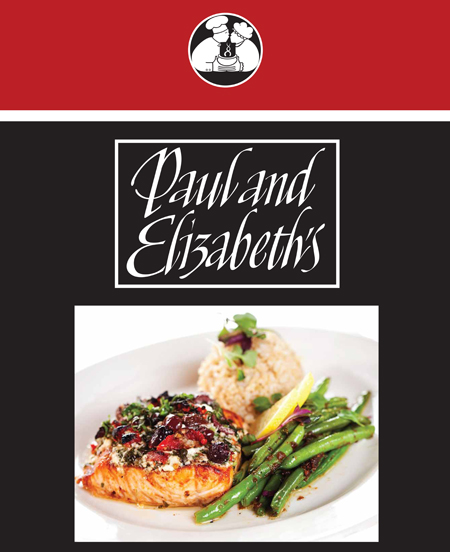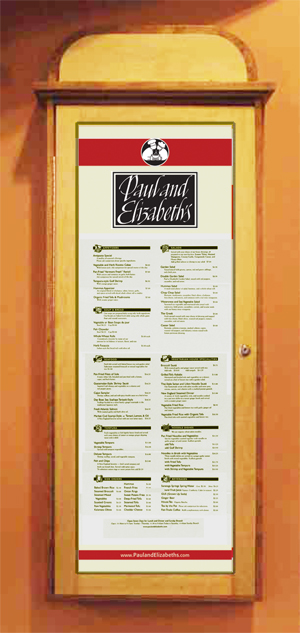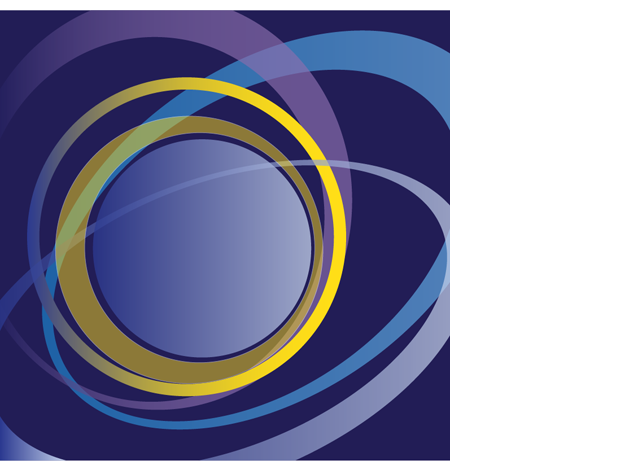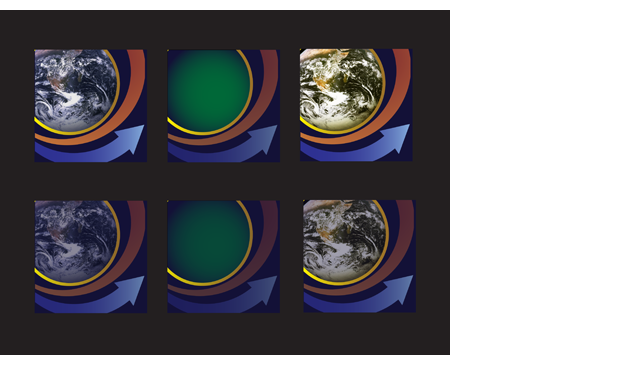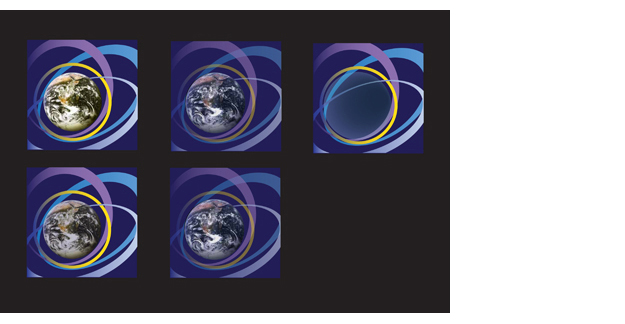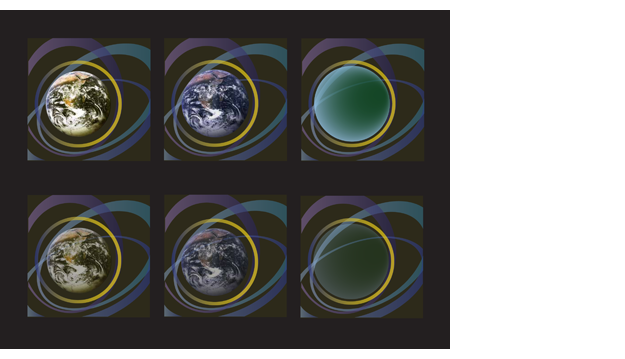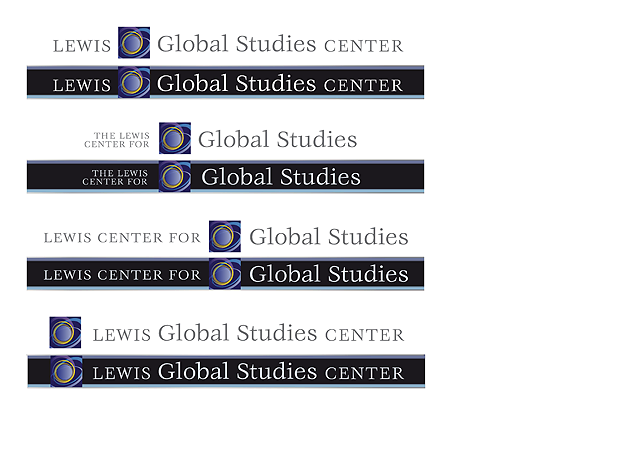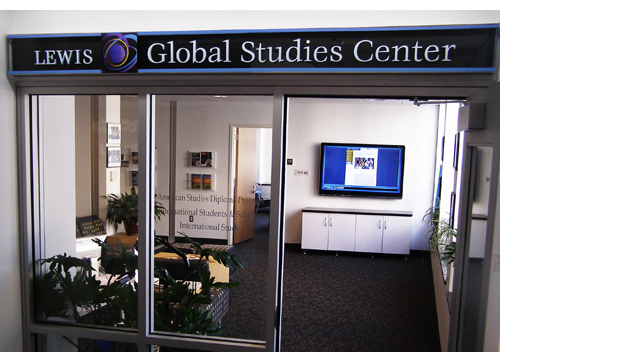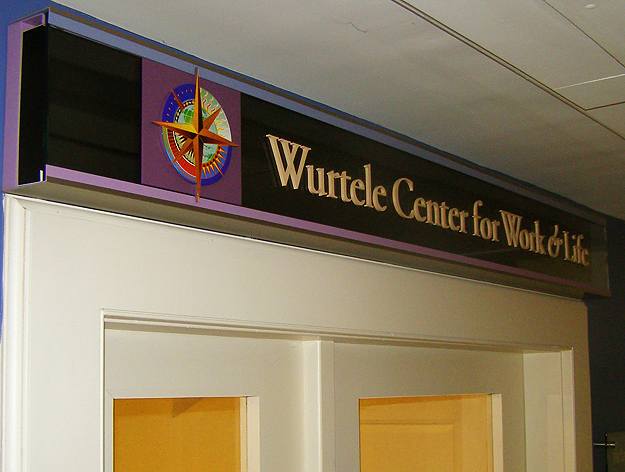Paul and Elizabeth’s natural foods restaurant is a landmark in Northampton. The owners – you guessed it – Paul and Elizabeth, arrived in Northampton from Boston in probably the mid 1970s. Both were learning the natural foods restaurant business at the Seventh Inn restaurant and school from master chef Hiroshi Hayashi. Paul and Elizabeth wanted to carry forward what they were learning by establishing a restaurant in Northampton similar in concept to the Seventh Inn. My wife and I provided them with a place to stay on occasion while they were in the process of moving and setting up the restaurant.
They arrived with the logo image of the smooching cooks for the restaurant made by another designer, but from the beginning I worked with them on various aspects of the restaurant’s visual identity. I went off to teach for several years in the late 1980s and when I returned in the early 1990s, I helped them update their identity. In 2004, after designing full time for a sign materials manufacturer, I went solo again and so on occasion I still do some work for them.
The P and E’s logotype shown in the example at the top of the post is a current application of interpretive lettering I did for them in the early ’90s (above). Interpretive lettering is hand drawn lettering that combines the freedom and energy of calligraphy with the precision and finish of a typographic font. I began building these logotypes in the early ’80s using pencil, pen, ink and black and white gouache on paper and in the late 80’s moved to Adobe Illustrator on a computer, of which this is an example. The skill level and the amount of time to develop such a logotype was about the same as hand construction, but the versatility in application was greatly improved as an illustrator file.
In the meantime, our kids have grown up, their kids have grown up and i recently got a call from Nate, their eldest son who is now taking over the restaurant’s major responsibilities. He wanted to update their signage at the front entrance to Thorne’s Marketplace where the restaurant is located, and the menu displays at the front and rear entrances to the restaurant itself.
After taking measurements and photos of the site I provided them with a concept that we decided to go with after a few revisions. Boxes had been previously built and installed at the front outside of Thornes and just outside the dining area. Both boxes had glass doors that opened to a cork display area on which they had previously pinned up menus.
To make things interesting, I decided that part of the design would be applied to the glass door with the rest against the cork interior. This provided some dimensional interest. At the back entrance, the sign was to be hung inside facing out to the street. I maintained the design concept, but there was no viable way to do anything dimensional.
The examples below, are what I showed them for design concepts. I firmly believe in showing a sign concept as it would appear on location. Though the photos look like the final sign in place, the images I’m showing are my designs superimposed over a photo of the window and the boxes. In reality, that is pretty much how the actual signs look in place. Above each concept is the before example of each of the signs.
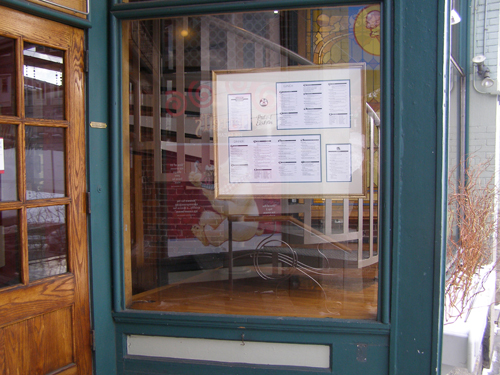
This is what the back entrance sign looked like for several years
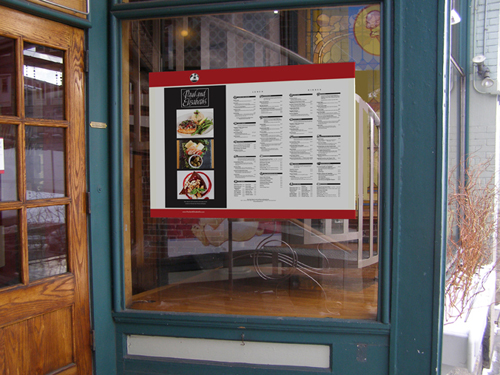
This was the design concept presented for the new sign which is pretty much how the new sign now looks on location.
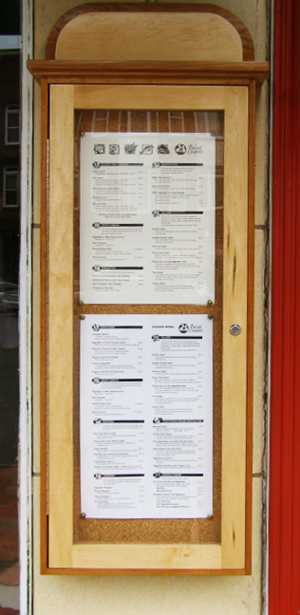
This is how the boxes on Main Street and at the restaurant entrance looked before redesigning.

Above (Main Street) and below Restaurant entrance): These were the concepts presented for the new displays and pretty much how they now appear. In both cases the red stripes and logos were applied to the glass and everything else sits on a single panel about 2″ behind the glass.

